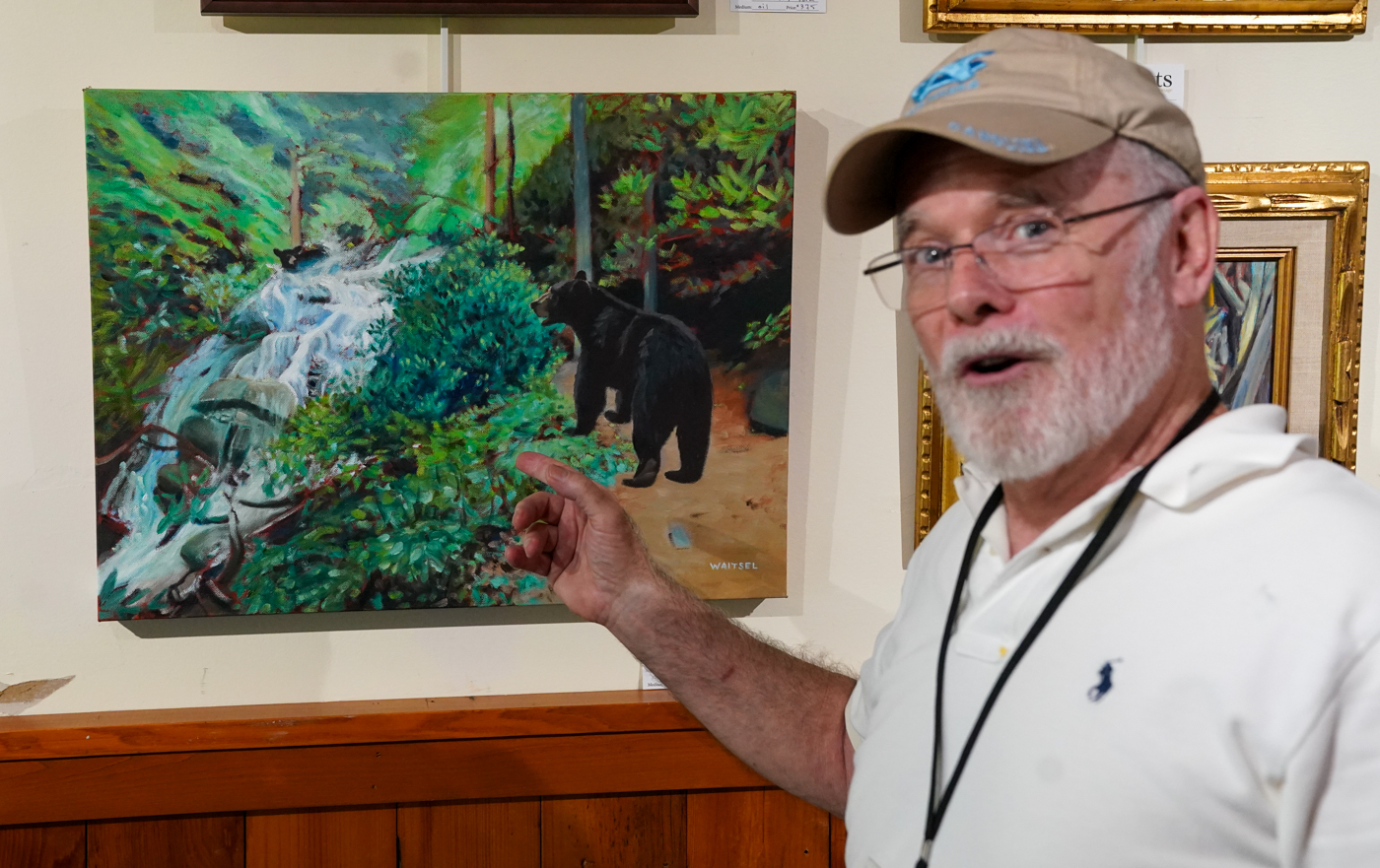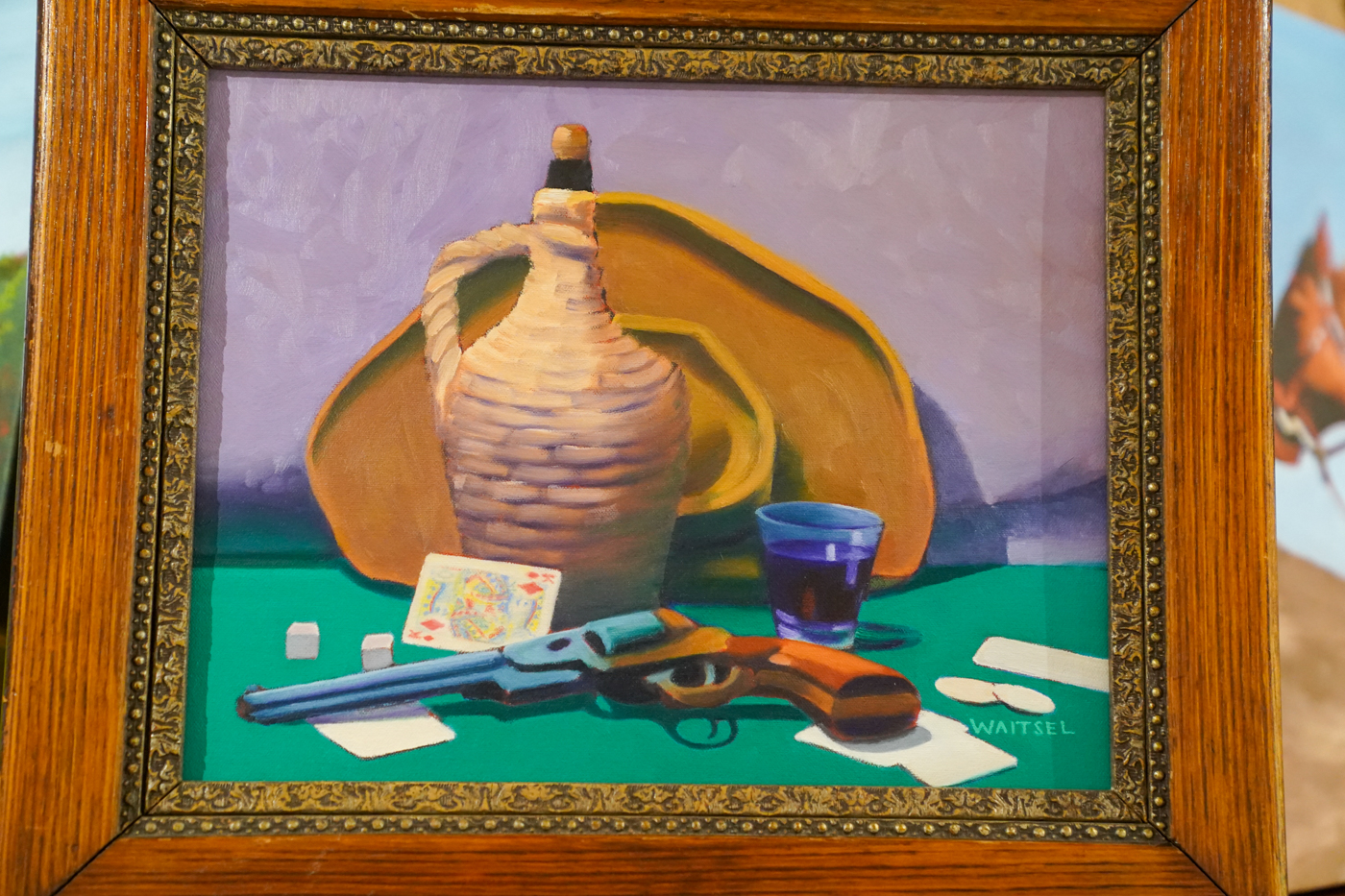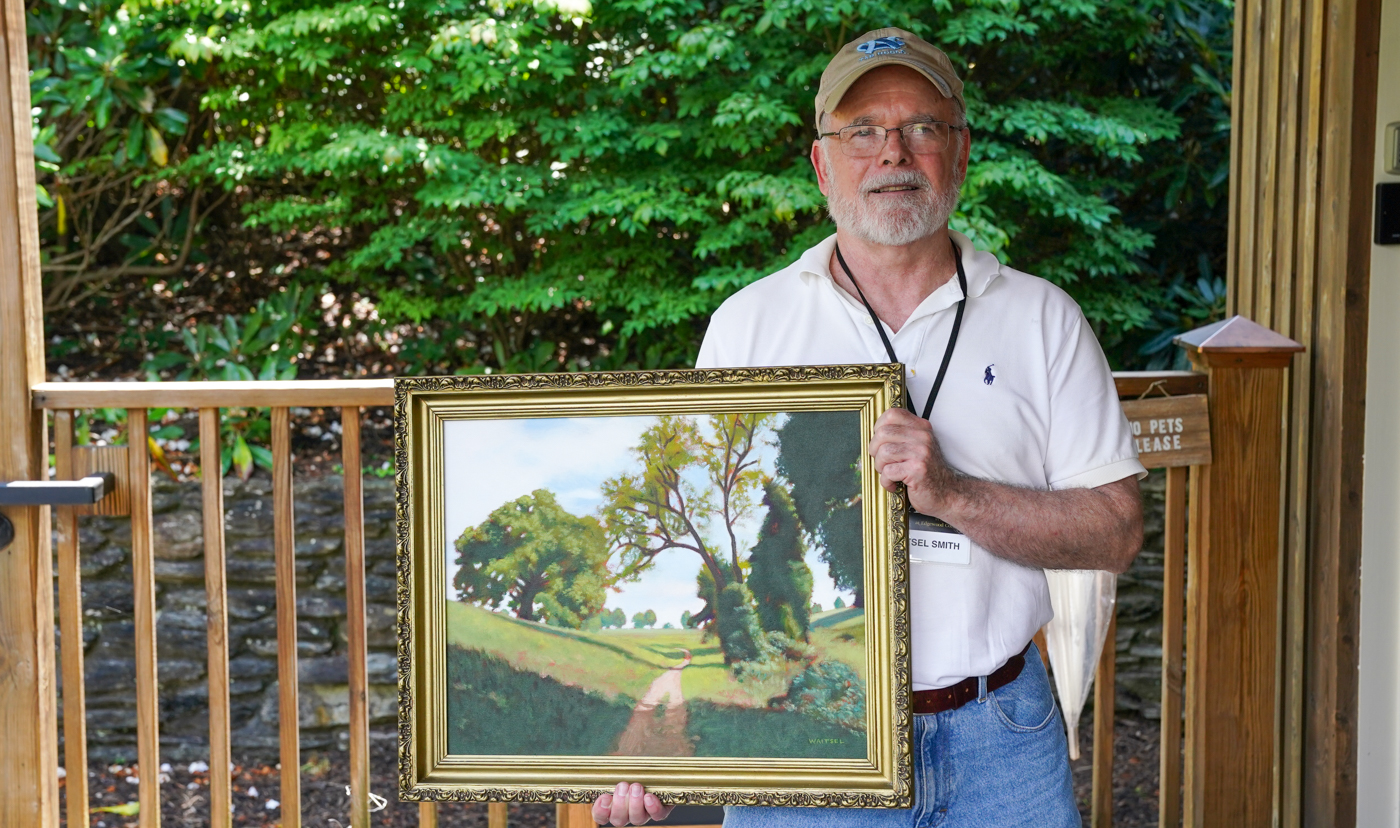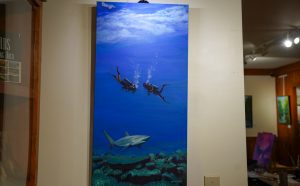By David Rogers. BLOWING ROCK, N.C. — Since the last time we interviewed artist Waitzel Smith, in 2022, he has started to downsize his paintings and now often paints his subjects with a frame in mind.
Smith is one of of the featured artists July 21-27 in the Blowing Rock Historical Society’s “Artists in Residence” series at Edgewood Cottage in Blowing Rock.
To prepare for this year’s Artists in Residence exhibit, Smith had a mission in mind, reporting that he went to a furniture store that was transitioning from traditional furniture to contemporary styles — and purchased 40 traditional frames.

“I’ve never worked much with frames before,” Smith acknowledged. “So one of the big differences this year is that my work is mostly framed. I still have done some things with gallery-wrapped canvases, but I am enjoying the frames because they often tend to sell the artwork.”
“I have been matching my artwork with the frames. I took photographs of things I thought I would want to paint and (enlarged) the photos to the size of the frames. If I liked the way a photograph looked in a particular frame, that’s how I decided what to paint and which frames to match the paintings with,” said Smith.
How God put all those qualities into one animal is amazing.
Pointing to a landscape painting he had done on a Biltmore Estate trail, Smith talked about the ornateness of the frame.
“The Biltmore Estate was built in 1895. This frame could very have been constructed in 1895 for a landscape that hung in the The Biltmore. It has all of the scroll work and the ornate features of that era.”

Smith admitted that one of his favorite themes is “cowboy.”
“That painting over the fireplace of a hard-riding cowboy is my favorite,” said Smith. “I love cowboys. I love horses. And I love Westerns. There are a lot of horse people around here and I want to start doing more and more horses. They are incredible animals — smart, fast, and obedient. How God put all of those qualities into one animal is amazing. And they are beautiful creatures. I love cowboys because the tend to want to mix it up! And I like that.”
“For cowboy paintings, I found a frame that is almost wormwood. The frame has a very masculine look to it,” said Smith. “It is kind of a reddish wood.”
The process for creating art is very physical.
He mentioned that a lot of people like gold-hued frames or black frames and that those two frame colors work the best for most paintings.
“I have tried copper and other colors, but I keep coming back to the gold and the black,” he said.
Smith reported he took four classes in the last year from Jeremy Sands, two focused on plein air and two on studio painting.
“Jeremy works mostly in acrylics,” said Smith. “I thought his classes might get me to do more in acrylics, but they really didn’t. I still prefer oils. The classes did get me more and more into landscape. I work in acrylic some, maybe a little more than I did before the classes, but I love oil and I love watercolor. Those are the two mediums for which I have the most passion.”

Born in Lenoir (“I think the jury is still out on whether I have been raised,” quipped Smith), the one time rugby hooker spent four years at the University of North Carolina-Chapel Hill.
“When I finished at Chapel Hill, I still didn’t know what I wanted to do,” he said. “So I took a couple of years off, then went back to school at East Carolina University and decided to study art. “East Carolina… that is where I played rugby.”
In describing his passion for the creative process, Smith said he likes art because it is expressive and physical.

“My senior show at East Carolina was actually called, ‘Physical,’ because all my paintings were of dancers or athletes. But it is more than just that. The process for creating art is very physical. You almost have to wrestle with the paintings. Picasso, who I admire very much, once said if you don’t wrestle or struggle with a painting, it is not going to end up as a good painting. I may not be Picasso, but I pretty much struggle with every painting I do,” smiled the rugby player-turned-cowboy artist.
Smith noted that he is a staunch believer in using photography as an artistic asset.
“Even if I am painting plein air, I always take a photograph of the scene. The light is always changing and it is good to be able to go back and look at a photograph of the scene at the moment you became interested in it,” said Smith.
Smith said he struggles a bit with plein air painting, even after his two workshops with Jeremy Sands.
“I struggle with it. You have to complete the painting within a couple of hours or you’re cooked. I’m usually not in that big of a hurry,” Smith concluded.






David, you’re the best! Thanks for the great photos and interview. Look forward to our next time together. Waitsel